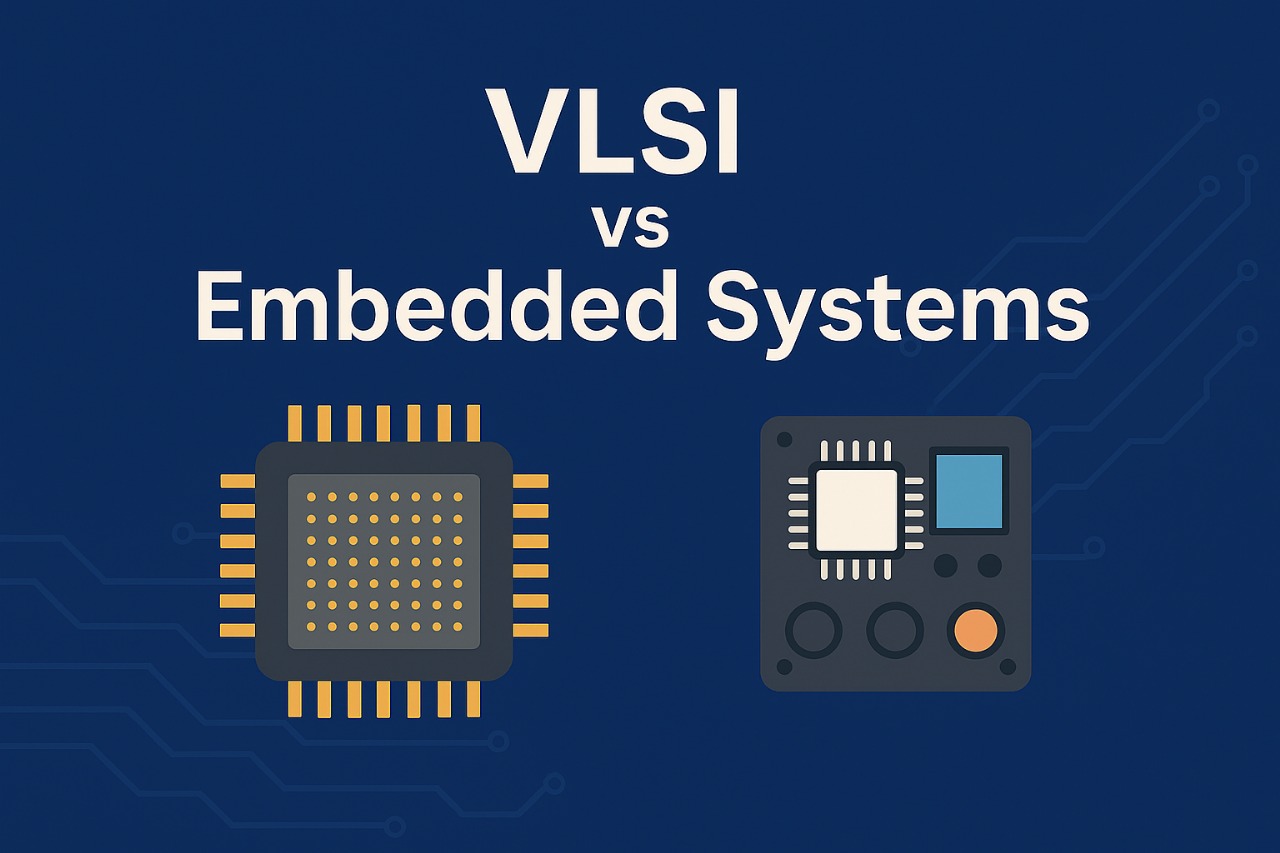
Compare VLSI and Embedded Systems careers. Learn job roles, skills, salaries, difficulty levels, and find which path is best for your future in 2025
Choosing between VLSI and Embedded Systems is one of the most important decisions for electronics and ECE students planning a core engineering career. Both fields offer stable job opportunities, strong industry growth, and long-term career prospects, but understanding the differences helps you make the right choice. When comparing VLSI vs Embedded Systems, the first thing to know is that each domain requires a different skill set and mindset. VLSI focuses on designing and verifying semiconductor chips used in mobile phones, computers, automotive electronics, and high-performance processors. This field involves RTL coding, design verification, physical design, and timing analysis. Students who enjoy logic design, SystemVerilog, debugging, and working with EDA tools often find VLSI more exciting. It also offers some of the highest salary packages in the semiconductor industry, making it a preferred choice for long-term career growth. On the other hand, Embedded Systems combine hardware and software to create smart devices such as IoT gadgets, robots, drones, and automotive controllers. This field requires strong knowledge of Embedded C, microcontrollers, RTOS, sensors, and basic electronics. Embedded Systems are ideal for students who enjoy hands-on work, real-time problem-solving, and building practical hardware projects.
VLSI vs Embedded Systems – Which Is Better for Your Career?
Choosing between VLSI and Embedded Systems is a common confusion for electronics, ECE, and EEE students. Both fields are core engineering domains with excellent salaries, strong career opportunities, and long-term industry demand. However, they are very different in terms of required skills, job roles, difficulty level, and learning path. If you want to build a career in the semiconductor or electronics industry, understanding the differences between VLSI and Embedded Systems is important. This blog explains everything — what each field involves, the skills required, job opportunities, salary comparisons, and which one suits your strengths.
What Is VLSI? (Very Large Scale Integration)
VLSI focuses on designing and verifying microchips used in mobiles, laptops, cars, servers, and IoT devices. Key domains in VLSI: RTL Design Design Verification (SystemVerilog/UVM) Physical Design (PnR, STA) DFT & STA VLSI jobs require strong skills in digital electronics, Verilog/SystemVerilog, UVM, and EDA tools. Best for you if: ✔ You like coding ✔ You enjoy logic design ✔ You want high-paying semiconductor jobs
What Is Embedded Systems?
Embedded Systems combine hardware + software to create smart devices like IoT products, robots, appliances, EVs, drones, and automation systems. Key domains in Embedded: Embedded C & C++ Microcontrollers (ARM, AVR, PIC) RTOS Device drivers IoT firmware Embedded is more hands-on with sensors, boards, and real hardware. Best for you if: ✔ You like coding in C ✔ You enjoy practical hardware projects ✔ You want jobs in IoT, automotive, robotics, or consumer electronics Embedded Systems combine hardware + software to create smart devices like IoT products, robots, appliances, EVs, drones, and automation systems. Key domains in Embedded: Embedded C & C++ Microcontrollers (ARM, AVR, PIC) RTOS Device drivers IoT firmware Embedded is more hands-on with sensors, boards, and real hardware. Best for you if: ✔ You like coding in C ✔ You enjoy practical hardware projects ✔ You want jobs in IoT, automotive, robotics, or consumer electronics
VLSI vs Embedded Systems – Key Comparisons
1. Salary Comparison VLSI Freshers: 6–14 LPA VLSI Experienced: 20–50 LPA Embedded Freshers: 3–7 LPA Embedded Experienced: 12–20 LPA ➡️ Winner: VLSI (higher salaries) 2. Job Opportunities VLSI: High demand in Verification, PD, DFT Embedded: More companies hire—but salaries are moderate ➡️ Winner: Tie (VLSI = high-paying, Embedded = high volume) 3. Difficulty Level VLSI: More complex, requires strong logic & coding Embedded: Easier to start, beginner-friendly ➡️ Winner: Embedded 4. Learning Curve VLSI needs advanced training (SystemVerilog, tools) Embedded needs basic C programming & microcontroller skills ➡️ Winner: Embedded ???? Conclusion: Which Is Best for You? Both VLSI and Embedded Systems are excellent core engineering careers — but your choice depends on your skills: Choose VLSI if you: ✔ Love coding & logic ✔ Want high-paying semiconductor jobs ✔ Can handle complex verification or physical design Choose Embedded Systems if you: ✔ Enjoy hardware + software ✔ Prefer hands-on projects ✔ Want faster job entry in IoT, automotive & robotics Final Advice: If your goal is higher salary and global opportunity → VLSI If your goal is practical projects and quick employability → Embedded Systems